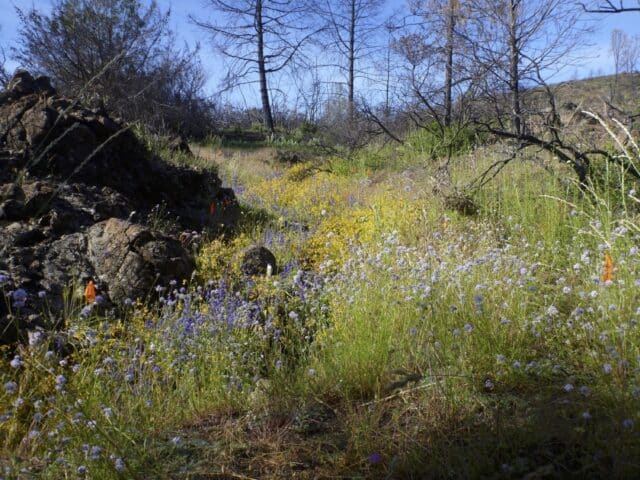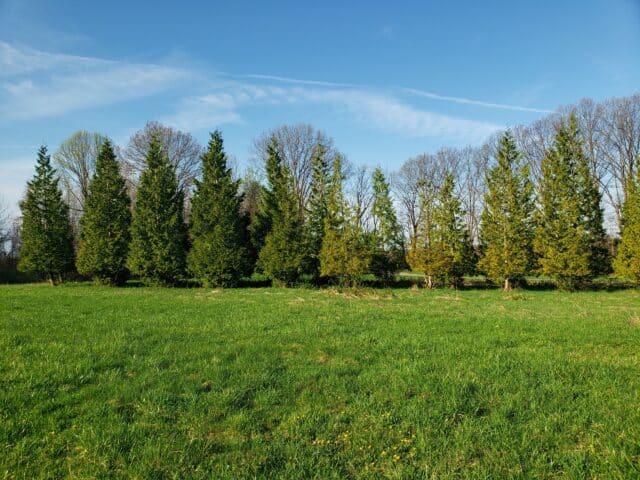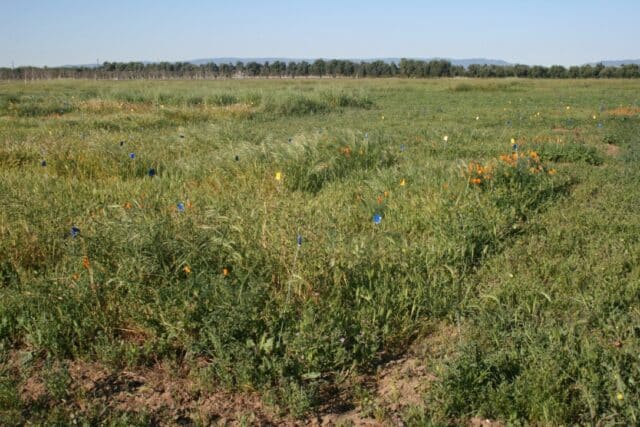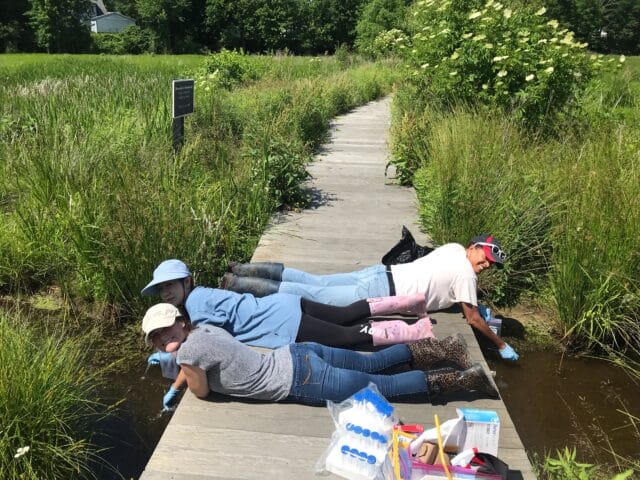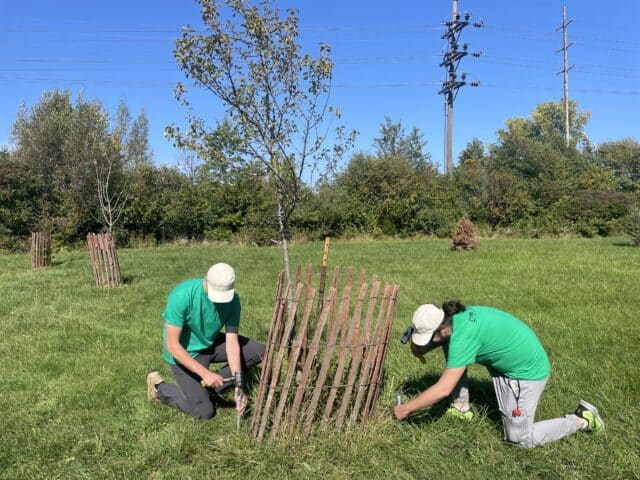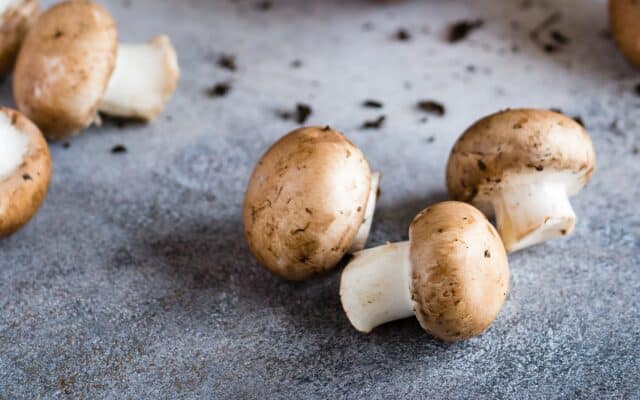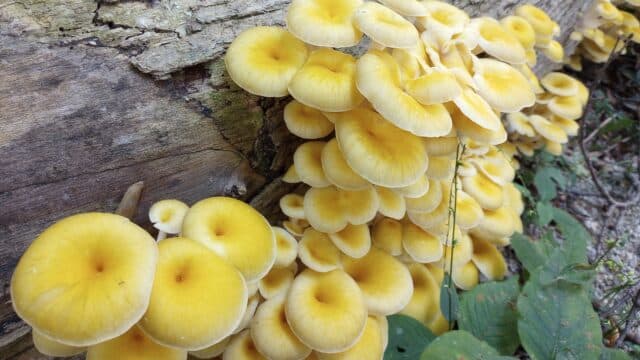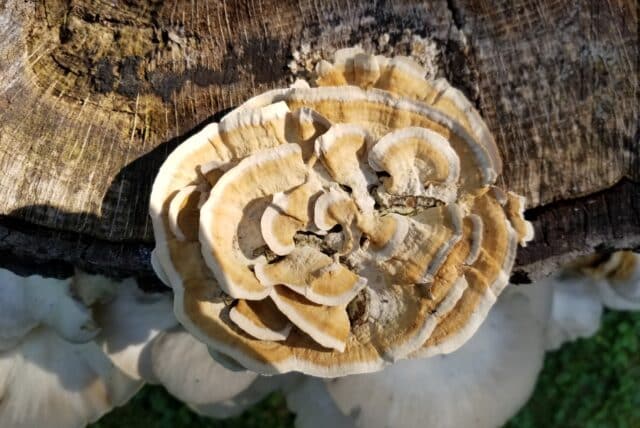National Mushroom Month: Sharing Some Science & a Recipe, Too!
September 17, 2021

Mycorrhizal at HF&G:
We continue to celebrate September as National Mushroom Month at HF&G! Today we want to tell you about our favorite fungal group: mycorrhizal fungi! While we certainly love all fungi, a large portion of the research in HF&G’s Soil Ecology lab focuses on the plant mutualists known as mycorrhizal fungi.
Mycorrhizal fungi live in association with plant roots in what ecologists call a symbiosis. This is where two different species live near one another. Symbioses are relationships that have evolved over time such that each species exploits the environment created by the other. The symbiosis between mycorrhizal fungi and plants is mutualistic, which means that both organisms benefit.
How do both plants and fungi benefit from the relationship? The fungi extend their hyphae, which are root-like structures, into the soil to absorb soil nutrients which they provide to the plants. In exchange, the fungi receive simple sugars from the plant which the plant creates through photosynthesis.
The symbiosis between mycorrhizal fungi and plants is also ancient. Fossils of mycorrhizal fungi date back to over 450 million years ago, and some have suggested that plants would not have been able to colonize land without mycorrhizal fungi. (Yes, fun fact, all plants originally evolved from algae that lived in water). Today, over 90% of land plants form relationships with mycorrhizal fungi that live on their roots. Garden plants like the onions, tomatoes, and beans in your garden all benefit from mycorrhizal associations, as well as the dominant tree species in Ohio’s forests (maple, beech, oak, tulip poplar, and black cherry, to name a few).
In the forests at Holden, we have studied the mycorrhizal fungi associated with many different plant species, from the 200-year-old oak trees in Pierson Creek to the wild leek that emerge each spring in Stebbins Gulch. Our research helps us better understand these important fungi, and how global change could affect them. By studying these fungi and understanding how the environment affects them, we can better ensure healthy plants and forests for future generations.

If you want to learn more:
Claudia Bashian-Victoroff will be leading a mushroom foray on September 18th and you can join us and learn about how to identify fungal species by their mushrooms or sporocarps. This class is currently sold out.
A hands-on mushroom log inoculation workshop is being offered by Jessica Miller where participants will inoculate their own log with shiitake mushroom spawn and take it home to grow their own mushrooms outdoors.
To hear more about how we use DNA sequencing to study fungi in the forests at Holden Forests and Gardens, join Sarah Kyker for a virtual seminar and virtual tour of the lab at the Long Science Center on September 29th.
Mushroom recipe to enjoy at home:
We love to use mushrooms in our recipes when cooking! Here is one shared with us by our friend, Arik Joukhajian. Arik is a Ph.D. student at the University of California, Riverside. He studies arbuscular mycorrhizal fungi and fire ecology. The recipe was modified by a recipe provided by the food blog, Meat Eater.
Puffball Mushroom Pizza
(The serving size depends on the size of your puffball, but about 3-4 servings! This recipe is vegetarian and gluten free.)
Ingredients:
1 giant puffball (Calvatia gigantea)
Olive oil or other cooking oil (as needed, about ¼ cup)
1 cup of your favorite pizza sauce
3 cups of shredded mozzarella cheese
½ cup parmesan cheese
1 cup fresh basil leaves, chopped
1 red onion (chopped)
Crushed red pepper (optional)
- Preheat oven to 425 degrees F. Slice your giant puffball into ¾ inch rounds. These rounds will serve as the base for your pizzas!
- Brush the sides of your puffball rounds with olive oil or another cooking oil.
- Lay your rounds flat on a baking sheet and top with pizza sauce, both cheeses, and red onion.
- Bake for 15-20 minutes until cheese is just browning.
- Top with finely chopped basil and crushed red pepper, to taste
- Cool for about 5 minutes and serve fresh
Suggested pairing: A light beer or mineral water with lemon and ice
Important Note: Whenever you are collecting and eating a wild mushroom practice caution. Use a reliable guide to identify the fungus and confirm your identification with a mycologist. When you are certain about the identity of the fungus, cook and eat a small amount before having a large meal as some individuals are sensitive to some species. Remember: there are old foragers and bold foragers but there are no old, bold foragers.
Claudia Bashian-Victoroff, MS, Graduate Student, Sarah Kyker, Postdoctoral Research Associate, and David Burke, VP, Science & Conservation
